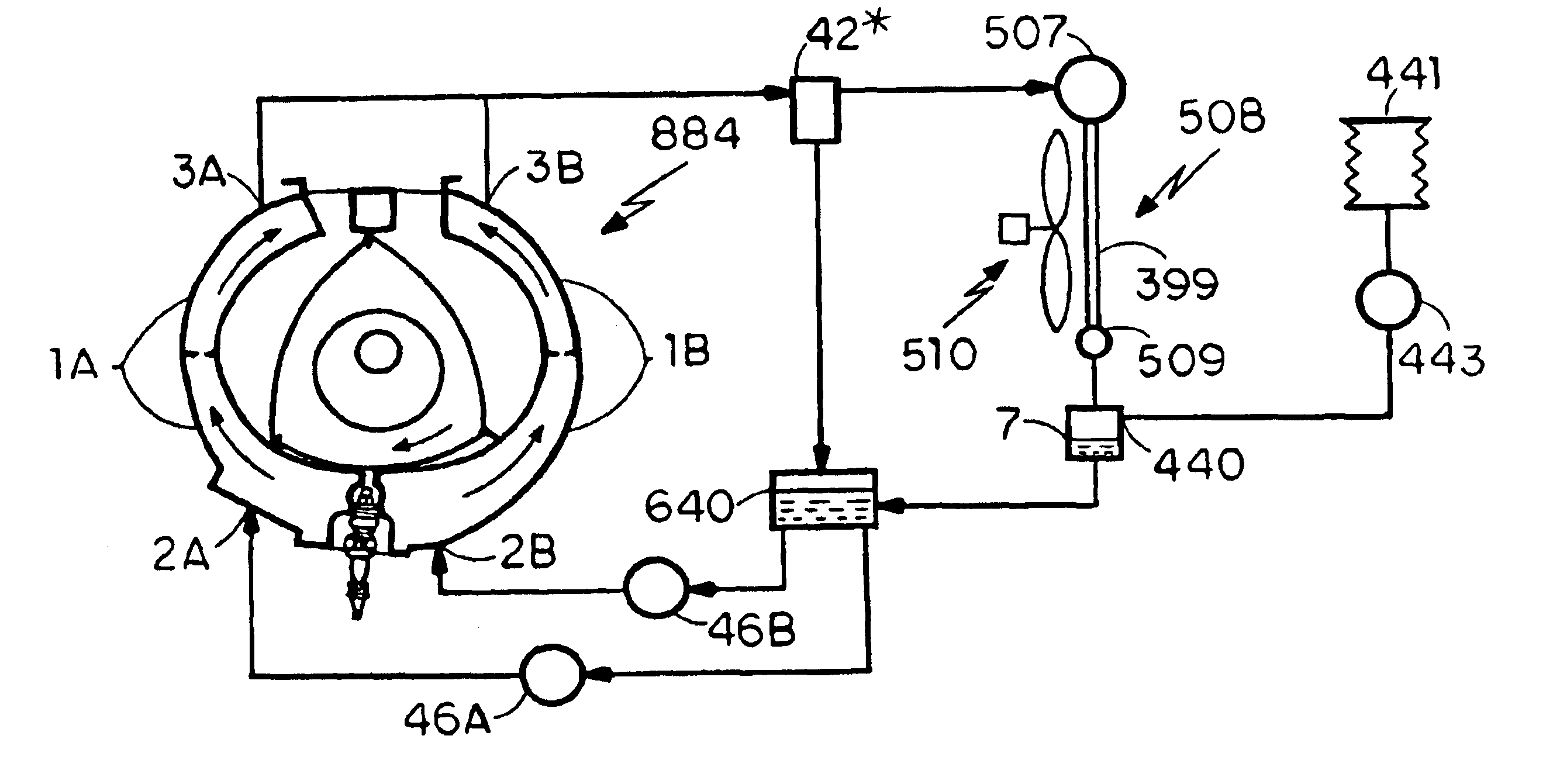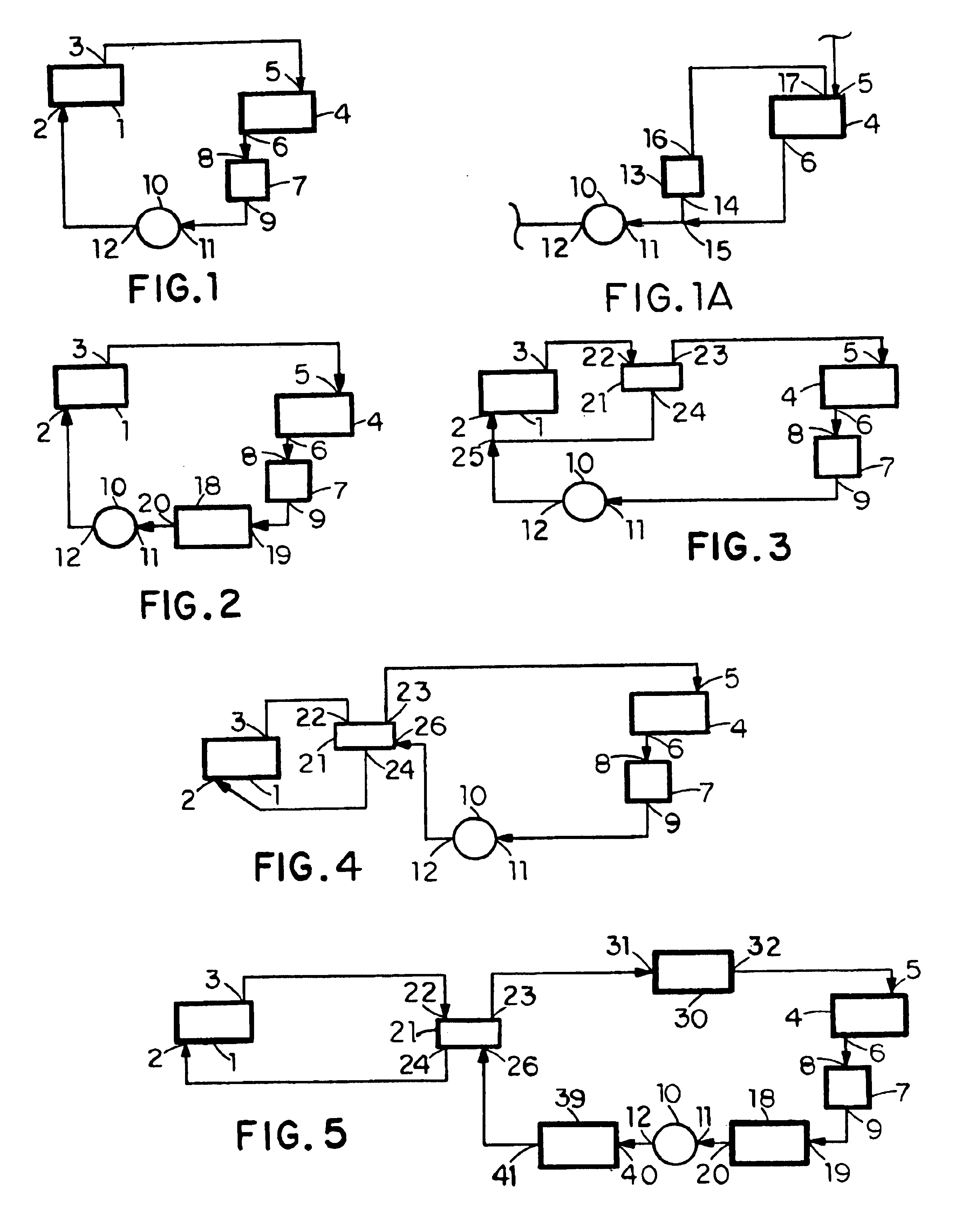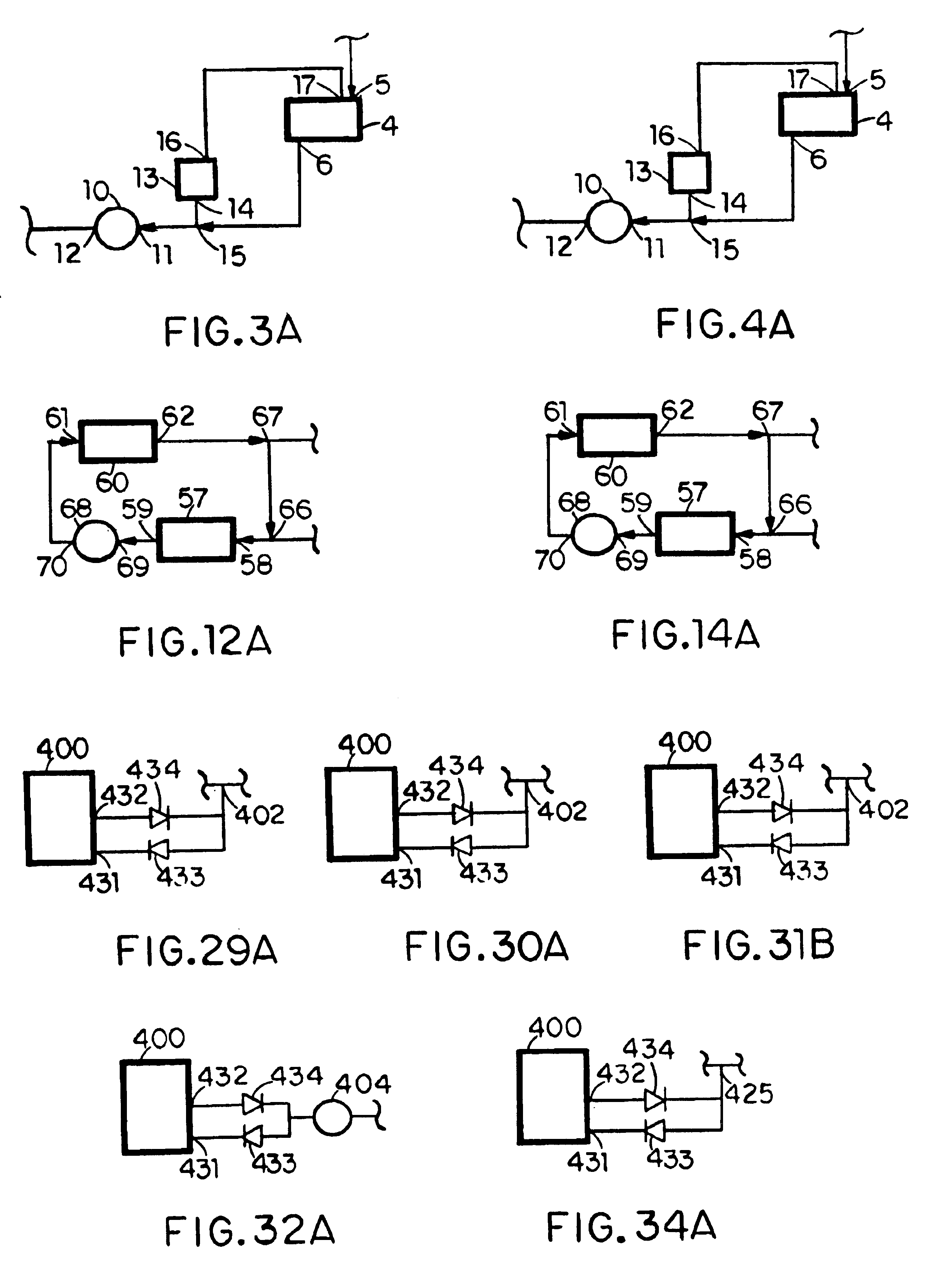Two-phase heat-transfer systems
a heat-transfer system and two-phase technology, applied in the direction of indirect heat exchangers, machines/engines, lighting and heating apparatus, etc., can solve the problems of inability to achieve and achieving the effect of reducing the internal pressure of inactive airtight two-phase heat-transfer systems
- Summary
- Abstract
- Description
- Claims
- Application Information
AI Technical Summary
Benefits of technology
Problems solved by technology
Method used
Image
Examples
Embodiment Construction
A. General Remarks
The optimal number and kind of airtight configurations used in a system of the invention, the desired properties of those configurations, and the particular refrigerant—and where applicable inert-gas—control techniques employed to achieve those properties, depend on the particular heat-transfer application considered. It follows that the best mode for carrying out the invention, namely the preferred embodiment of a system of the invention, depends on the particular heat-transfer application considered.
In this part (part V) of this DESCRIPTION I first describe principal, ancillary, and IG, configurations suitable for various preferred embodiments of the invention, and then give examples of those embodiments in the context, for specificity, of a particular category of applications. Each of these embodiments is expected to be a preferred embodiment for some specific useful application. The statements made about the principal configurations of airtight configurations a...
PUM
 Login to View More
Login to View More Abstract
Description
Claims
Application Information
 Login to View More
Login to View More - R&D
- Intellectual Property
- Life Sciences
- Materials
- Tech Scout
- Unparalleled Data Quality
- Higher Quality Content
- 60% Fewer Hallucinations
Browse by: Latest US Patents, China's latest patents, Technical Efficacy Thesaurus, Application Domain, Technology Topic, Popular Technical Reports.
© 2025 PatSnap. All rights reserved.Legal|Privacy policy|Modern Slavery Act Transparency Statement|Sitemap|About US| Contact US: help@patsnap.com



